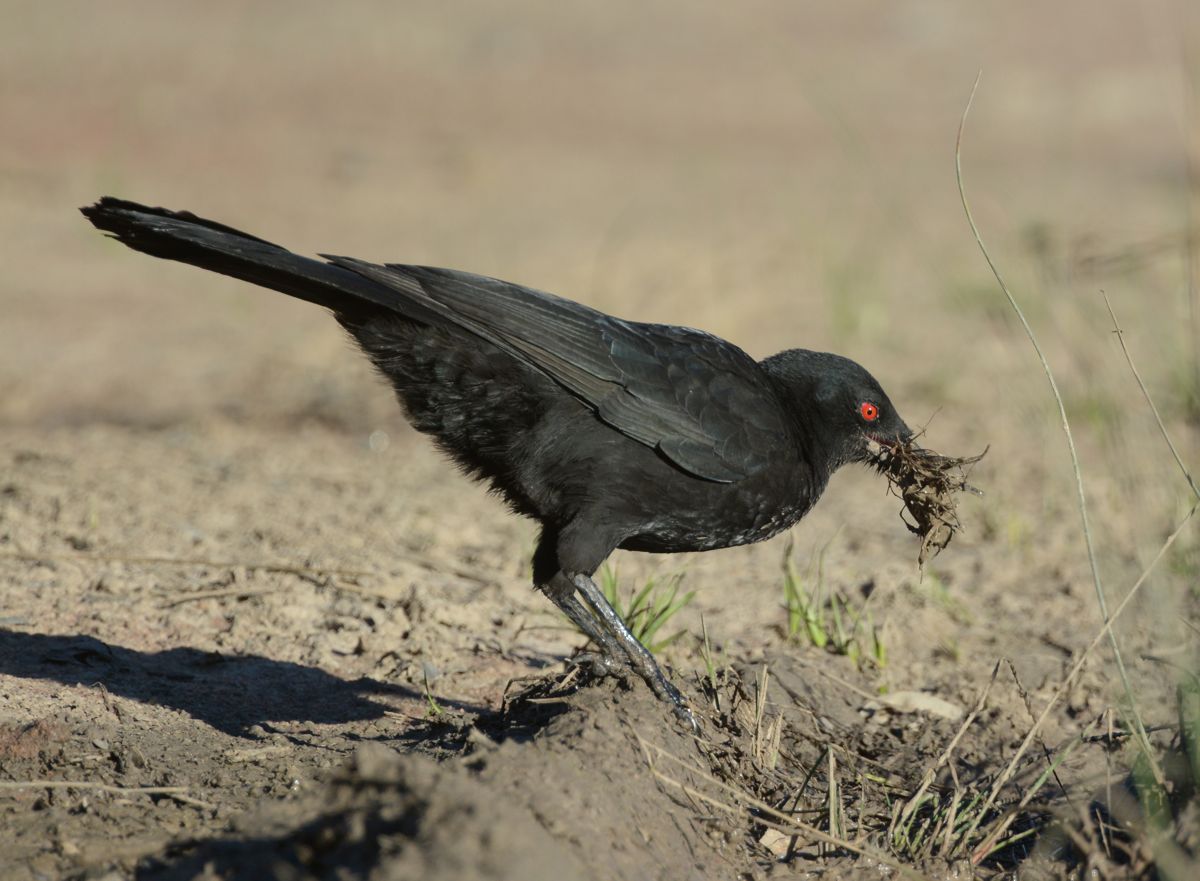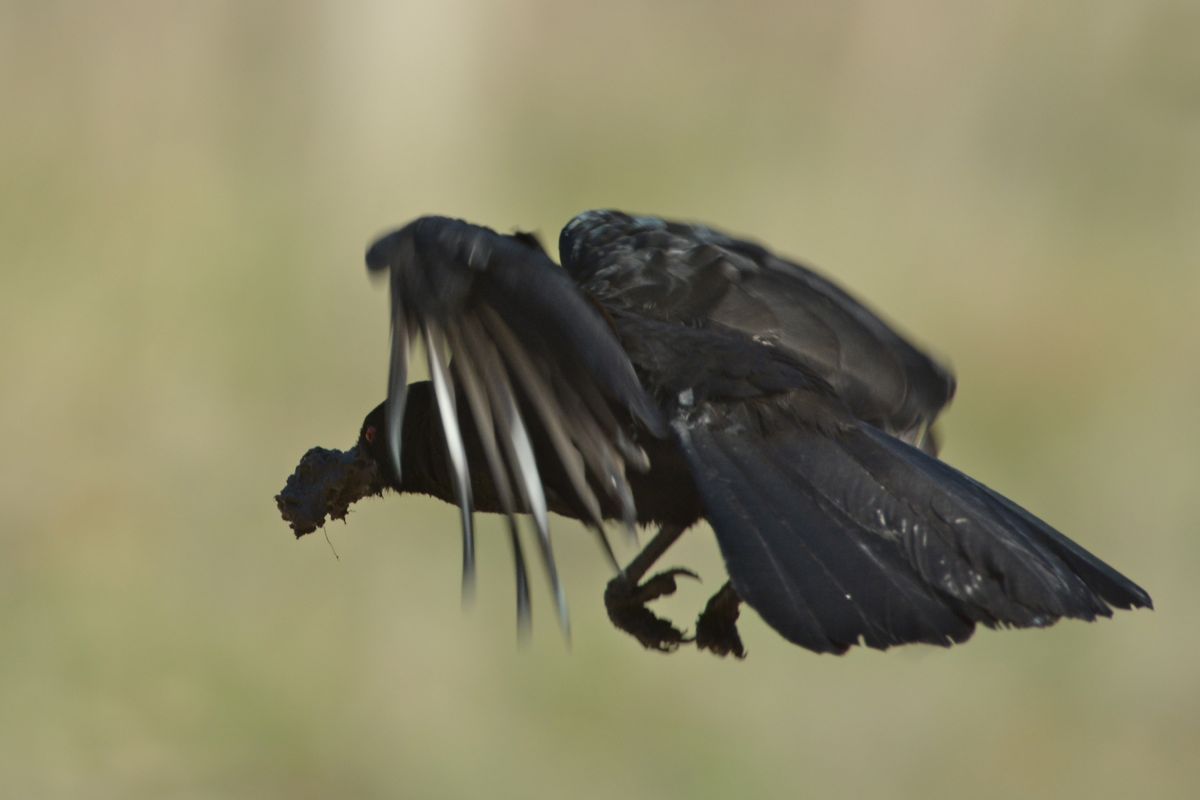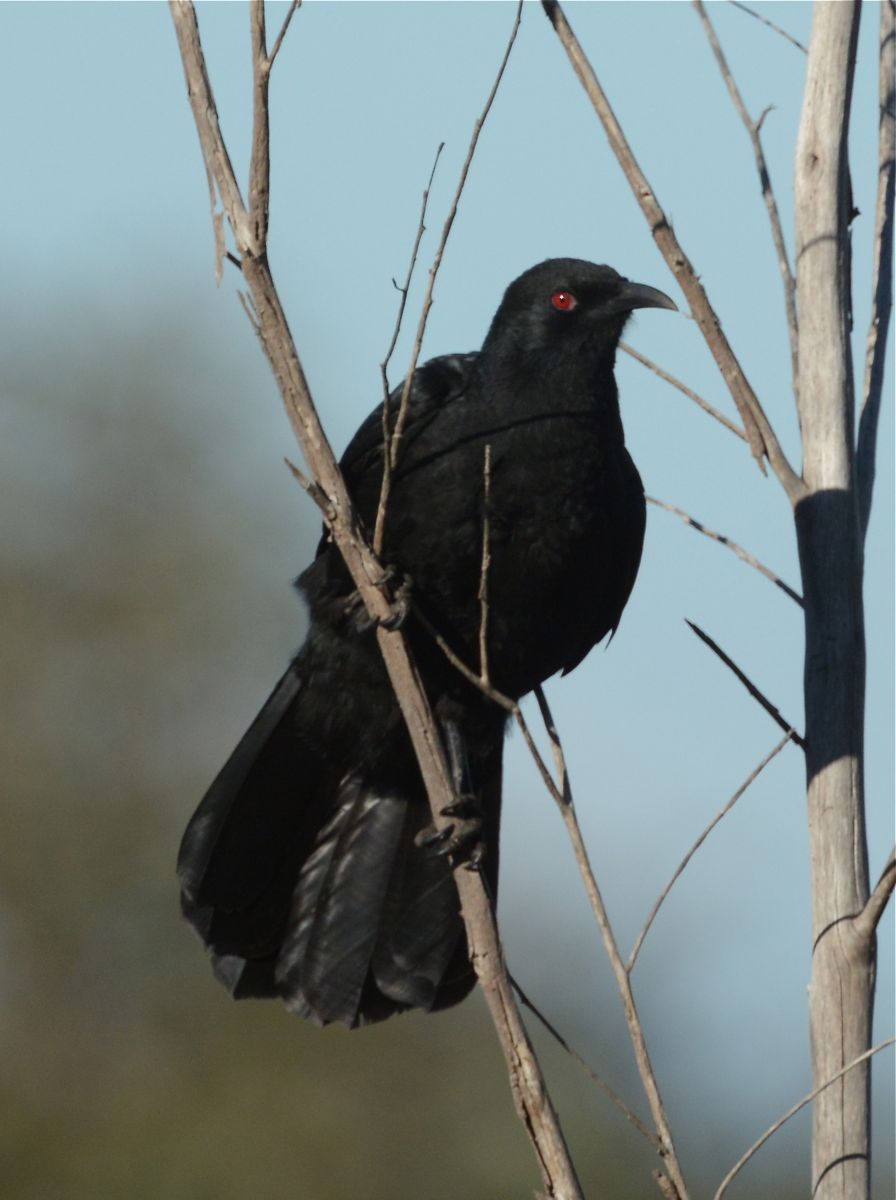The Flame Robin flock seems to have moved on out of the Woodlands Backpaddock area. That figures, as we have access to it this year, (unlike being locked out last year), but for reasons only birds understand, the majority have moved elsewhere.
Given a reasonable day, I decided to have a bit of a walk further afield and perhaps track down some of the new feeding areas.
But no one said anything about ‘The Frost’ as I drove out just on sunrise, the fields were as they say in the classics White. And when I started to walk over said fields the grass underneath crackled. So put on the ski hat, gloves and scarf. And still the cold cuts in.
I was going to ply my trade along some back tracks, kangaroo pads and a few areas where the old gums have opened up the area for grass and moss beds. But.
No robins. No noise, no Thornbills, no robins. In the background the beautiful and unmistakable mellow descending whistle of the oboe like call of White-winged Choughs. I really like these birds, but have so few even ok photos of them. Too hard as they are black, dig around in the undergrowth and never seem to be out in the open for me. The calls indicated that at least three separate groups were at work in the forest ahead.
To get to a new location, I had to cut along a vehicle track and then enter a well groomed Kangaroo pad. As I was walking down the road, in the sunshine ahead, I saw a White-winged Chough on the roadway. Then it turned and flew, with a beak full of mud. They build a communal nest out of mud. It is a large round pot shape, and really quite a work of art. They also communal nest the eggs, and have long discussions over whose turn it is to sit next.
Now, the light was all wrong for me, and I had no idea where the nest might be being built, although some trees are more likely candidates than others, so I moved past the mud seep on the side of the track, found a suitable out of sight location with some good strong front lighting, set up the camera, and waited. And waited. No doubt the passing by had not gone unnoticed.
Then after about 5 minutes some black shapes wafted through the undergrowth on the other side of the road. The committee had decided to check me out. And they sat. So did I. After a few more long minutes, one moved out across the road to take a peek from behind, and one moved up closer. And sat. So did I.
Given I seemed harmless enough, the consensus was back to work, and they wafted down on to the grass to pick up some mud gathering implements. Choughs, I quickly discovered don’t just gulp a beakful of mud and take off. They carefully prepare some grass, twigs, etc and then dab it into the mud, much like a painter would do to prepare a brush, And not just any mud. It has to be the correct consistency. Not that hard stuff over there on the edge, nor that really sloppy stuff near the water, but this fine, sticky stuff just near the weeds. And dab they do. And twist it about, and then dab again, until that’s about as much as can be loaded up, then it’s off to the nest.
They also seem to be able to work with the consistency. A little bit of the hard stuff, blended with the softer mud, wrapped in more grass, given a quick dash in the water, apply more sticky mud. It’s a craftsmanship that was as much fascinating as perplexing to work out.
After about half an hour work stopped for awhile, and I took a quick look for the nest. Not to harass them while they are nesting, but to be able to avoid the area and give them the peace that a nursery deserves. But, to no avail. Cleverly hidden high up in a gum somewhere near, I suspect.
The supervisor came along for a bit of a look at proceedings. You could tell it was the supervisor. No mud on it.
So with their lovely cries ringing in my ears I went back to the more mundane job of looking for Flame Robins.









Good evening David and thanks for yet another fascinating tutorial, beautifully illustrated with your photos. I observed the choughs with their young some time ago in Serendip Sanctuary close to the lake. At that time I thought they were some kind of currawongs with red eyes.
Reading your stories that give me so much insight into birds’ lives and looking at the most amazing photos accompanying them, I wonder when you are going to publish this book, which would enrich every serious birdwatcher’s and nature lover’s library.
The Nankeen Kestrels alone would make a wonderful album.
I am so glad I’ve found you on Flickr.
Best wishes, Adam
LikeLike
G>day Adam, they are funny bird but.
Thanks for the upbeat comments. I just happy that the birds are noticed and that we get to see fascinating insights and are able to share them from time to time.
The Kestrels were a really amazing 4 months. But they were also very very co-operative, and that made it a bit easier.
Keep taking pictures, we do!
Regards
David
LikeLike
Hi David,
Loved your story and photos of the WW Choughs. They’re my favourite birds and we’re fortunate enough to have 2 families living around our property. I’ve observed them building nests and often they seem to start one, get half way through, then abandon it. A week later they start another one in the next tree. I’m not sure if it’s the youngsters having practice sessions or what! They are quite used to me being around so I know it’s not my presence that has disturbed them.
I hope you manage to find and observe the nest. They are great to watch feeding the babies and you’d be able to get some great shots.
Cheers,
Christine
LikeLike
Hi Christine,
Thanks for the note. They are really fun birds. I’d love to be able to say that a couple of pairs accepted my presence, but really I only see some of these on rare occasions.
You might well be right, its a bit early in the season, and the majority of the flock, there is at least 16-18 of them were not involved. I don’t get to swing by that area regularly, but will go and have another look next week.
Be interesting to see what they are doing. I’ve not seen them feeding, but I have seen them having the most intricate discussions about whose turn it is to sit in the pot. Most endearing creatures
regards
David
LikeLike
I have enjoyed this story very much, after seeing the WW Chough mudnest recently in SA Mallee.
Julie.
LikeLike